Article
The Big Island Encompasses History of the Other Hawaiian Islands
Author(s):
Frequent visitors to the Hawaiian Islands naturally develop favorites – for us, it’s Maui. Although Maui may be dominant, its tourists don’t often visit its small Cinderella-like stepsisters next door.
Frequent visitors to the Hawaiian Islands naturally develop favorites — for us, it’s Maui. Although Maui may be dominant, its tourists don’t often visit its small Cinderella-like stepsisters next door. Yet Lanai, typical of backwater places, is really relaxing and Molokai, with its historical and outdoor attractions, has many challenges for visitors. One of the challenges might be what the seas will be like if you take the ferry back to Maui. If the Pailolo Channel is wild (“Pailolo” refers to one of the windiest and roughest of all the Hawaiian channels and the word translates to “crazy fishermen,” suggesting only they would attempt to navigate its conditions) you will always remember your ferry trip. But for now, let’s take a look Maui, Kauai, and the Big Island.
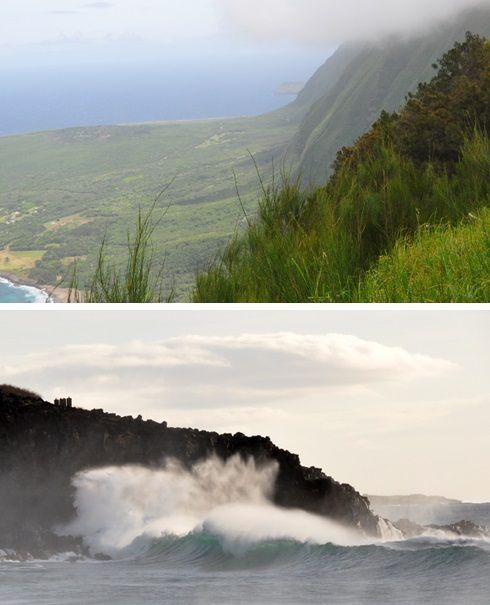
The north shore (top image) of Molokai has the celebrated, in our case agonizing, mule ride down the sheer cliffs; it doesn’t have much repeat business. The south shore is the end point of the Ironman 26-mile Annual Challenge of the Pailolo Channel.
Some say Oahu is over-commercialized, as if Honolulu were Miami Beach West. But the island does have our nation’s memories of Pearl Harbor.
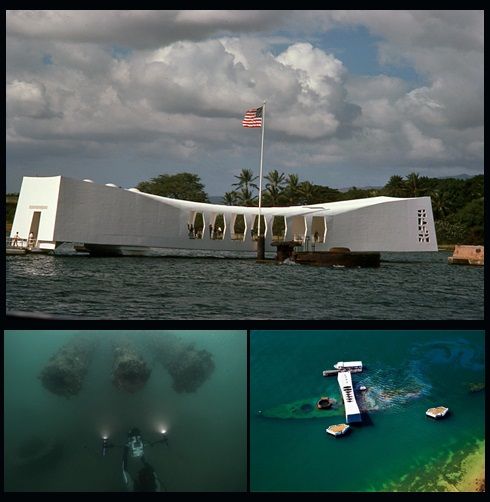
Pearl Harbor Memorial — even today, oil still leaks from the USS Arizona. (Bottom left image: National Parks; Bottom right image: Reddit)
Maui, on the other hand, offers essentially everything, so give yourself time. You can rent a small Cessna with or without a pilot and look down on its dormant volcano Haleakala. Or you can hike into the Iao Valley and gaze on its mystical Iao Needle, the location where king Kamehameha defeated the Maui army in 1790 to complete his domination of all the Hawaiian Islands. Or head for the Hawaiian Aquarium at the Maui Ocean Center.
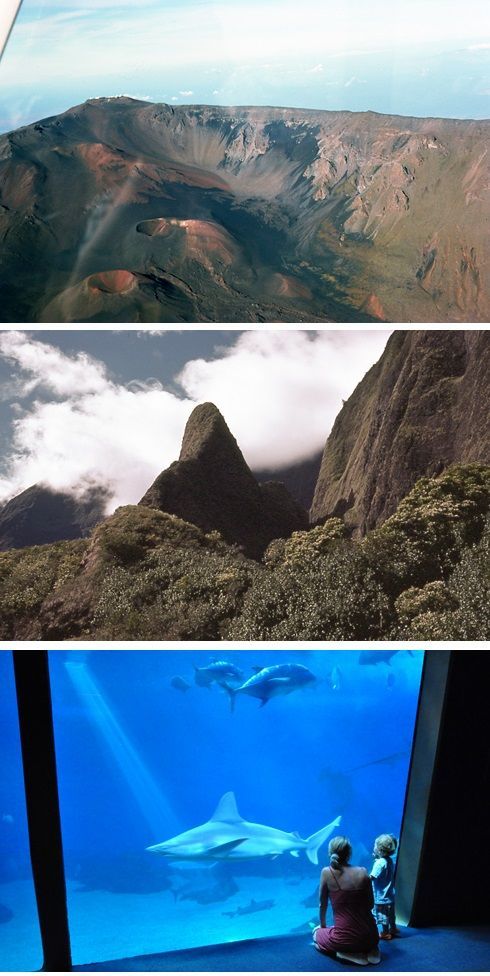
Get up close and personal with the Haleakala volcano and the Iao Needle.
Kauai is like a lesser known Maui, and it has the Hawaiian Grand Canyon, Waimea. The Na Pali Cliffs could scare any helicopter passenger if the pilot decided to show an abrupt descent. The island has the Fern Grotto, where Elvis Presley and the rest of Hollywood made their movies. Kauai has a regular population of more than 65,000, whereas the Big Island of Hawaii has 187,000. The Big Island is the home of the Parker Ranch, the original Hawaiian cowboys, and two active volcanoes. From lava hikes and overflights near the volcanoes to Atlantis submarine trips, there is a lot to see and do.
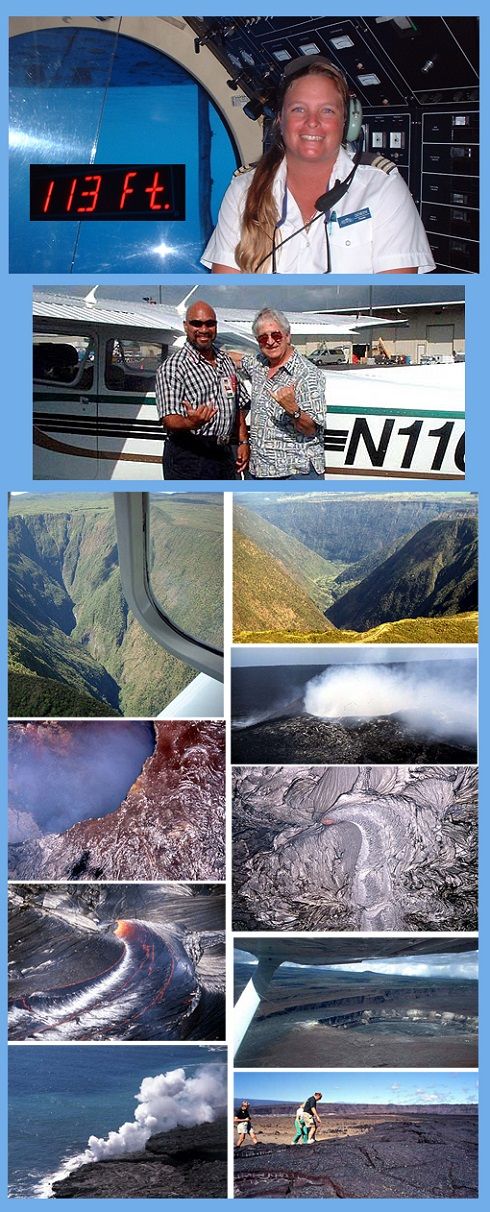
Atlantis Submarines and Big Island Air Tours, anyone? The local press has stories about tourist aircraft crashing into the ocean off shore, one in 2001 and another in July 2016. Local pilots point out the Coast Guard rescues were successful because the planes that ended in the ocean were fixed-wing aircraft and could glide for a bit, while the pilots prepared for ditching. For that reason, fixed-wing pilots say their planes are safer than helicopters.
Visitors on the Big Island will find the usual tourist shops in the rural places in the northwest, like Waimea. But a unique experience for most will be walking on the lava beds in the south at the Volcanoes National Park, now celebrating the 100th anniversary of the National Park Service. Just walking on the lava is thrilling enough, but petroglyph preserves allow you do more: namely take photographs of Hawaii’s history.
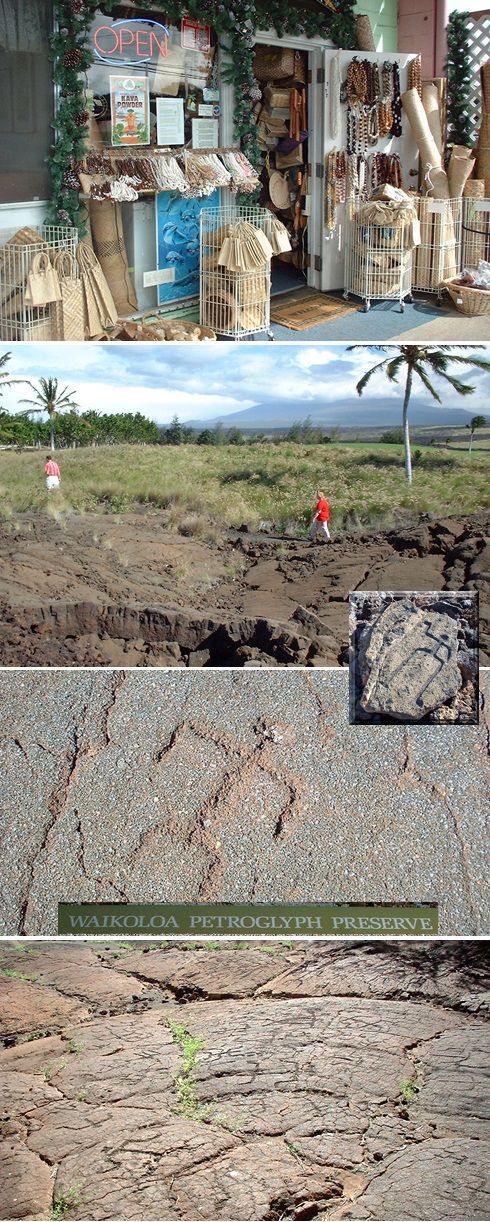
Village store in Waimea, lava beds, and the Waikoloa Petroglyph Preserve are sure to keep travelers busy.

It would be hard to see a greater contrast than the barren wilderness of the volcanoes compared to the bustle and fertility of Kailua/Kona on the Big Island. This is where King Kamehameha spent his final years, now featuring massive banyan trees.
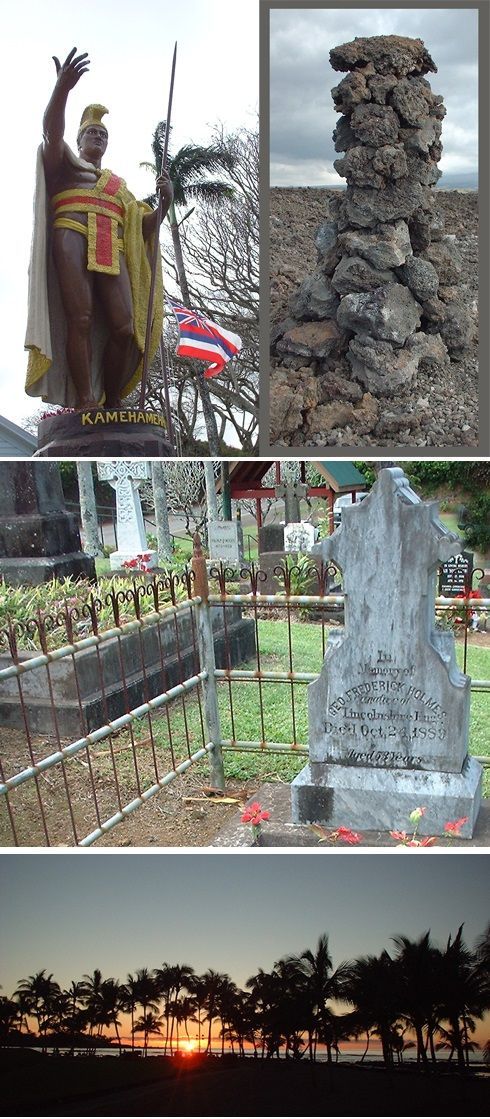
There’s a lot to Hawaii’s history and rushing would surely be a mistake. There’s statues of Kamehameha, the king who united all the islands in Hawaii, albeit by war. Other things to see are the gravestones on colonial cemeteries and the strange lava cairns or stone memorials, sometimes marking places on a lava field.
In many ways, the Big Island is a capsule history of the other Hawaiian Islands. Visitors who understand what happened here may learn to appreciate the entire Hawaiian experience. Just as Edinburgh medical students in the 1950s were told (rather pompously in pathology lectures), “Understand syphilis and tuberculosis and all other diseases will be made known unto you!” Thus to understand what transformed tourism in Hawaii it helps to recall the story of a colorful entrepreneur developer, Christopher Hemmeter, who pioneered the concept of luxury sprawling destination Hawaiian megaresorts. In an obituary in November 2003, the Honolulu Advertiser said the Hemmeter signature “is best known for the extreme — some would say outrageous – lavishness of the Hawaii hotels he built in the 1980s.” They were lavish. He began his concept in the early 1960s, but when he built his last one in 1987, the Westin Kauai. It rose on 560 acres with two golf courses and a two-acre refection pool and suites costing up to $1800. This resort was badly damaged in Hurricane Iniki, as many Hawaiian resorts were and they were either sold or recreated as relatively simpler structures. On the Big Island, Hilton Waikoloa was once the Hyatt and its village sprawls across 62 acres; it features a magnificent art collection and offers a complimentary tram system around the resort. It had to — it was so big.
In the 1980s to 1990s, Hawaiian guests erupted in anger as many of the mega-resorts did not have enough dining space for the total number of guests — even though some had been told by their travel agents to book their dining reservation for their entire vacation as soon as they arrived. For some visitors those vast resorts did not complement the Hawaiian experience, they competed with it. Some of the mega-resorts have been downsized and locals have told us over the years they have been pleased to see that happen, that this was not their Hawaii.
Our Hawaiian friends have another comment: that they realize, yes, they are our 50th state, but they wish mainland tourists knew and understood their past history better. We know exactly what they are getting at. A long time ago we were in the audience of a Las Vegas-style show in Waikiki on Oahu when the live performers put on an incident from their history. The stage darkened, actors in native costumes drifted into the shadows in the rear. Figures dressed like missionaries and politicians came in, money appeared to change hands and immediately the Stars and Stripes rose up on an unnoticed flagpole. The audience applauded wildly, some whistling and stamping their feet. We looked around and saw the few locals in the audience looking mortified, this, they told us afterwards, is their most shameful moment in history, when culture and their very times past was taken from them, and — to their grief – mainlanders thought to applaud this event!
The comment sensitive travelers hear all over the South Seas — what ruined the islands and tore away their innocence were European exploration, colonialism, disease, and the missionaries. We have been told this in Fiji, Tahiti, Hawaii, and even in New Zealand. This is not coming from revisionists who are trying to be politically correct, but from islanders who believe they have found a sympathetic ear – and they have.
*All photography by the authors unless otherwise noted
The Andersons, who live in San Diego, are the resident travel & cruise columnists for Physician's Money Digest. Nancy is a former nursing educator, Eric a retired MD. The one-time president of the NH Academy of Family Physicians, Eric is the only physician in the Society of American Travel Writers. He has also written five books, the last called The Man Who Cried Orange: Stories from a Doctor's Life.




